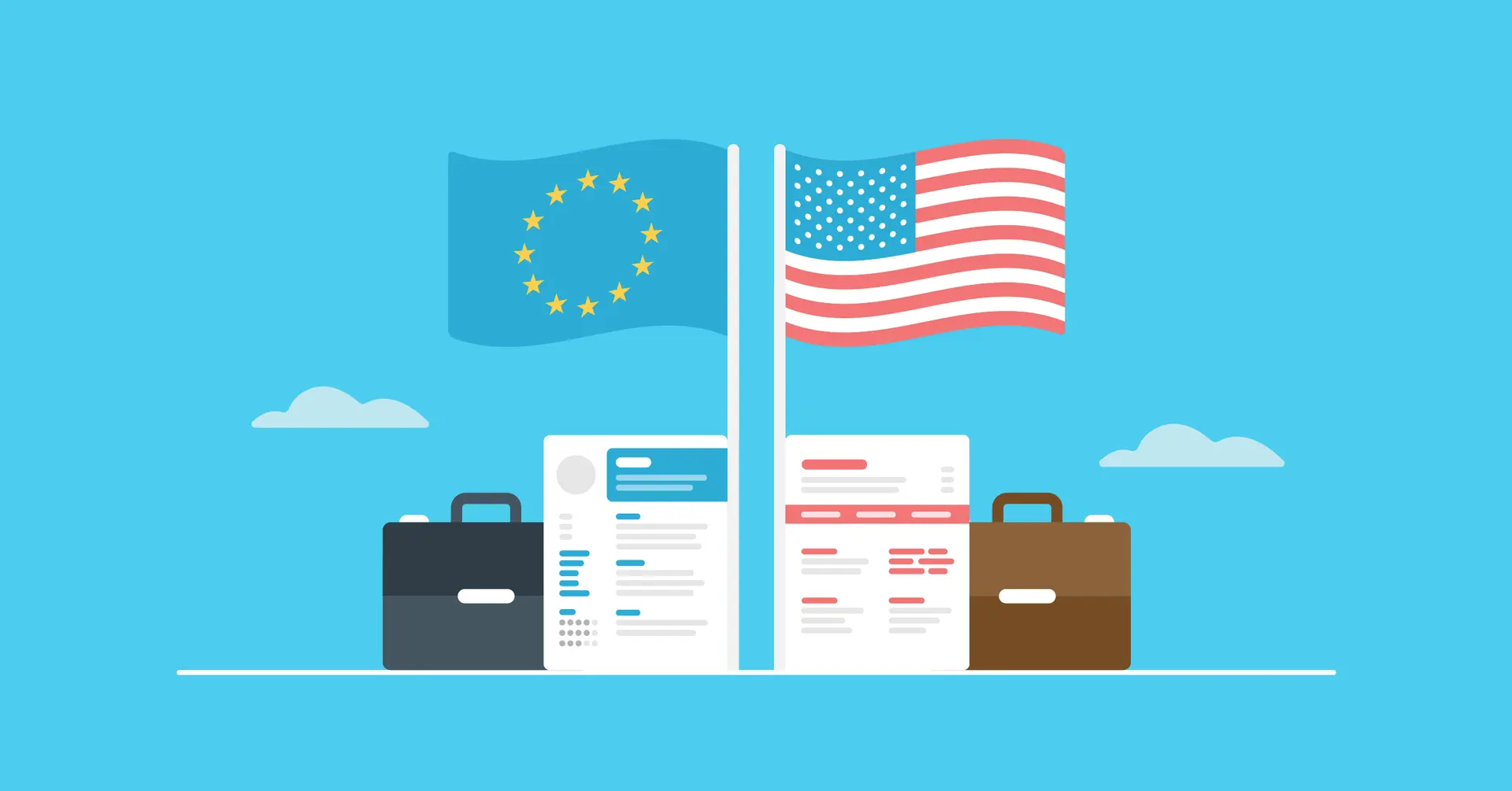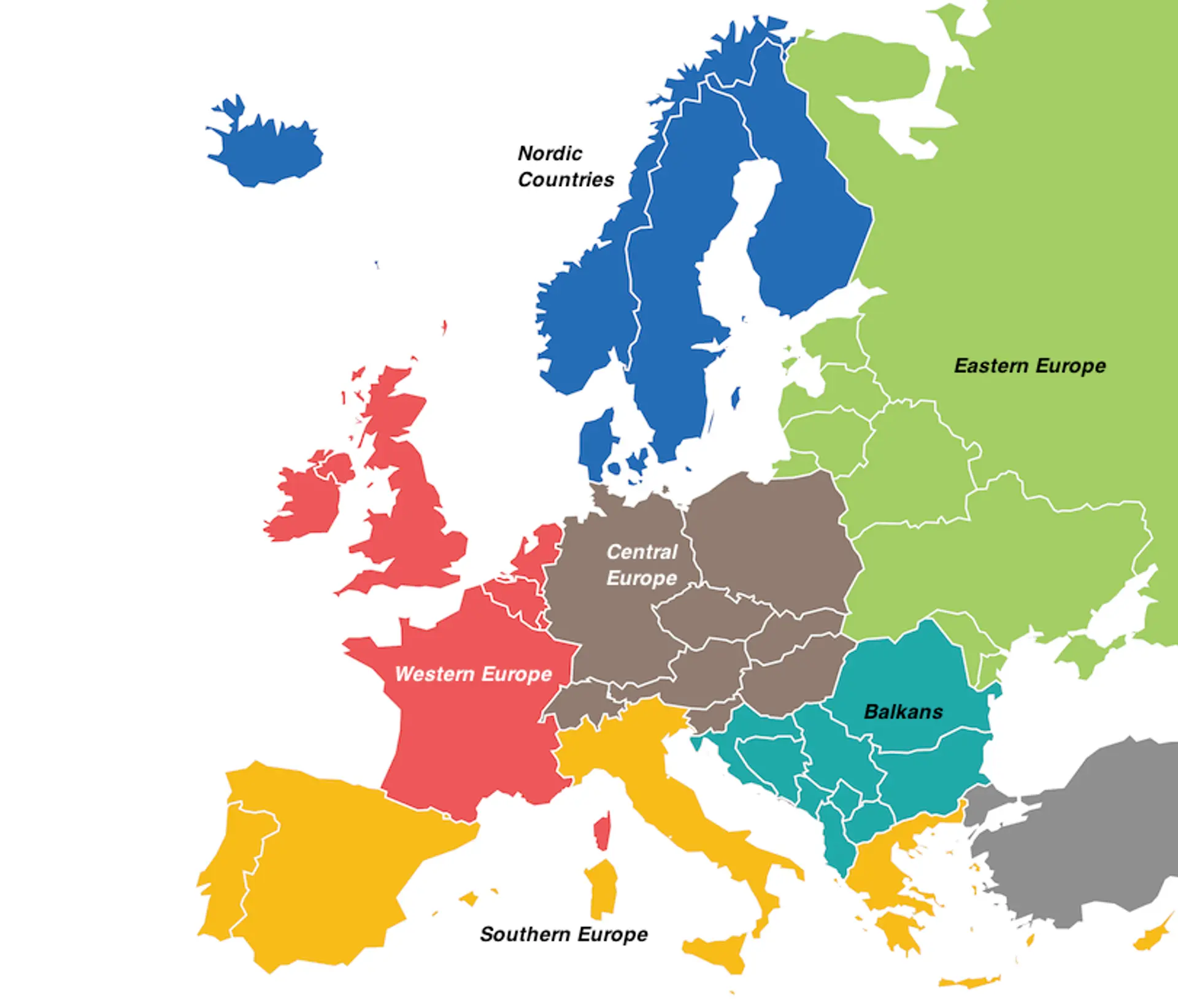Jobs in Europe - 5 Ways Recruiting is Different than in the U.S.
Updated on 09/15/2025

Whether you’re a candidate looking for work or a recruiter looking for talent, you should know before you go that European recruiting and American recruiting are different beasts. The same tactics that work in the U.S. won’t work in Europe — and vice versa.
If you intend to do some cross-cultural recruiting or job hunting soon, keep these tips in mind:
1) Europe Is No Monolith
Not that every U.S. state is culturally the same, but in terms of recruiting and hiring, recruiters and candidates share similar expectations, processes, and strategies from coast to coast. What works in New Jersey is likely to work in Ohio, or Texas, or California.
The same can’t be said for Europe. While many Americans may think of Europe as one undifferentiated landmass, the continent actually consists of 44 different countries.

These countries can be very culturally different from one another, and many don’t even share the same languages. In addition, each country has its own labor laws, expectations for recruiting and hiring, standard hiring procedures, and so on.
As ERE contributor Véronique Oonk puts it, “Data on the most effective recruitment approach on the local labor markets in Europe is non-existent. There is not a European recruitment standard.”
In other words: What works in France won’t work in Italy. When recruiting or job seeking in Europe, you have to be hyperlocal with your strategy.
2. Recruiting Lives Online in America — Less So in Europe
One thing Europe and America have in common: networking and referrals are the top sources of hires in both areas. According to Link Humans, almost a quarter of jobs are filled by networking or referrals in Europe. In the U.S., referrals account for around 30 percent of hires.
For Americans, much of their networking is social networking, especially among younger job seekers. One study found that 73 percent of American millennials found their latest job through social media.
In Europe, however, social media plays a much smaller role in filling jobs. According to Link Humans, only 2 percent of job openings in Europe are filled through social media!
If you’re searching for a job or candidate in Europe, you’ll want to rely more on old-fashioned, person-to-person networking than on social media sites.
3. LinkedIn Holds Less Power in Europe
Speaking of social networks: LinkedIn is the king of professional social media in America. In one survey, 90 percent of companies said they had made a hire through LinkedIn in the states.
In Europe, LinkedIn’s status is more contested. While 64 percent of companies in Europe use LinkedIn, other social media networks enjoy more popularity in certain countries. For example, Xing is more popular in Germany, and Viadeo gives LinkedIn a run for its money in France.
The lesson here: When hunting for jobs or candidates in Europe, don’t assume LinkedIn is your best bet. Find out what the go-to professional social networking site is in the target country.
4. Differing Expectations Around Benefits Packages
A “standard” benefits package can hardly be said to exist in the U.S., mainly because there is very little in the way of legislation requiring employers to give employees much of anything.
By contrast, many European countries have enshrined in law what Americans consider job perks. As a result, most European countries outpace the U.S. in terms of paid maternity/paternity leave, paid time off, and unemployment benefits.
European candidates may, as a result, expect much more from companies in terms of perks and benefits. As Oonk notes, “France has what is called ‘avantages en nature,’ which loosely translates to ‘social packages.’
This includes things like commuting expenses, children’s tuition expenses, bonus money for vacations, etc. These are extremely important to job seekers and should be highlighted when possible.”
For European talent, the lack of robust benefits can be a dealbreaker. For American talent, the existence of robust benefits can be a dealmaker.
5. CVs and Resumes
In America, companies will ask candidates to send in their resumes to apply for roles. In Europe, however, candidates are asked for CVs, or “curriculum vitae.”
What’s the difference between CVs and resumes? Not much, honestly. The American resume and the European CV are very similar documents. One major exception: In some European countries, it is customary to include a photo with your CV. In America, this is a major no-go.
Also of note: “CV” means something very different in America. The American CV is a much longer, more in-depth document typically used only in the academic professions.
It can be kind of confusing for international job seekers and recruiters to keep this all straight, but just remember American resume = European CV.
Conclusion
So, what's the takeaway in all this? In the simplest terms, it’s “be smart about your recruiting and job-seeking strategies.” If you’re wading into a new market in a new country, think before you act.
Recruiters and job seekers alike should pause to survey the landscape and get a feel for the local customs before making any moves in the talent market. Trying to recruit Europeans like Americans — or even trying to recruit French candidates like Italian ones — is going to backfire.
